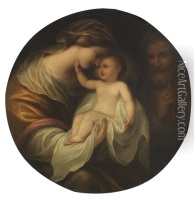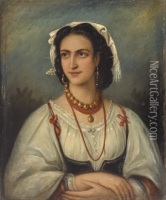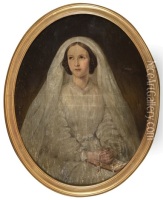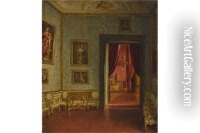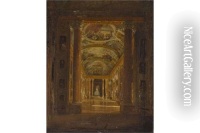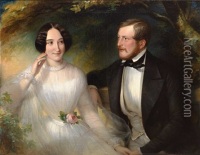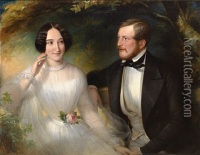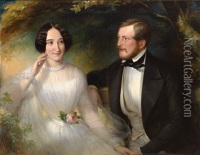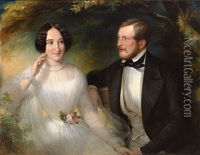Eduard von Heuss Paintings
Eduard von Heuss was a German artist primarily known for his work as a lithographer. Born on October 8, 1813, in Wiesbaden, Duchy of Nassau (now Germany), he became recognized for his detailed lithographs that captured landscapes, city views, and portraits with a remarkable sense of realism and accuracy.
In the early years of his career, von Heuss studied at the Düsseldorf Academy, where he was influenced by the teachings of Wilhelm von Schadow, who was the director of the academy at the time. The Düsseldorf school was known for its emphasis on meticulous detail and a romantic approach to subjects, which is something that von Heuss incorporated into his own work.
With the advent of lithography as a popular medium for reproducing images, von Heuss found his niche. Lithography allowed for the mass production of artworks, which made them accessible to a broader audience. Von Heuss's lithographs often depicted the Rhine landscapes and the architecture of German cities, reflecting the 19th-century interest in the picturesque and the sublime.
Despite his contributions to lithography and the arts, Eduard von Heuss did not gain the same level of fame as some of his contemporaries. Nevertheless, his works were appreciated for their technical proficiency and attention to detail. Von Heuss continued to produce lithographs throughout his life, and his works were often collected by those who appreciated the German landscapes and cityscapes of the time.
Eduard von Heuss passed away on March 24, 1864, in Wiesbaden, leaving behind a body of work that remains of interest to art historians and collectors who specialize in 19th-century European prints. His lithographs continue to be studied for their contribution to the visual culture of the period and for their role in the popularization of lithographic art.


